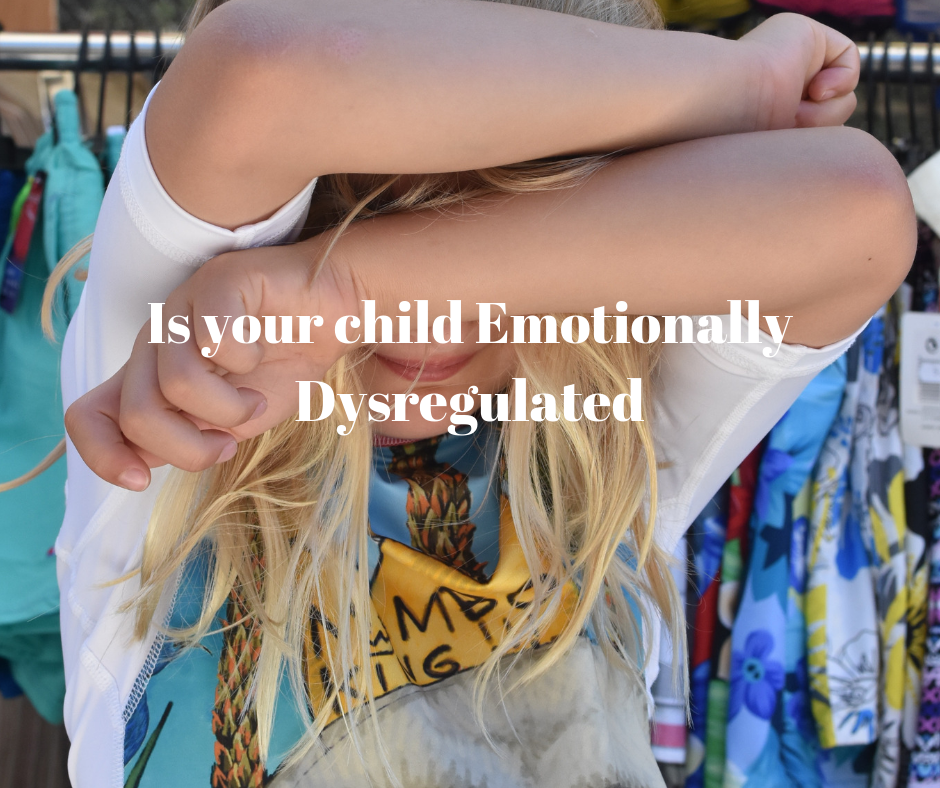Are you concerned your child is dysregulated right now? Are they having endless tantrums and appearing to be triggered by anything? Their moods are up and down, and they never seem to stay calm. Do they seem distracted and fidgety? These types of behaviours may be typical. Therapists use this term to describe developmentally inappropriate behaviour rather than label a particular disorder. How come?
Did you know that children are not born with the ability to self-regulate? As a result, their brains develop this capacity until they are 25 years old. Consequently, children struggle to self-regulate, and this behaviour is normal between 18 months and three years of age. Some children continue to have behavioural problems well into adulthood, explaining why you want to seek help now.
What is Self/Emotional Regulation?
When does it start?
 The process starts pretty soon after birth. Children can’t manage immense feelings until they’re four, so keep that in mind when frustrated with your three-year-old. Babies experience their first emotions through you. Your baby feels strong feelings and sensations, and cannot understand what is happening.
The process starts pretty soon after birth. Children can’t manage immense feelings until they’re four, so keep that in mind when frustrated with your three-year-old. Babies experience their first emotions through you. Your baby feels strong feelings and sensations, and cannot understand what is happening.
You can help him understand, comfort, and explain his feelings. By mirroring their feelings, you allow them to feel understood and contained.
Soothing your baby enables them to relax and calm down, and then they learn how to do this for themselves; this is what we call self-soothing/regulating. It is a process that continues for a long time (up until 25).
Click child’son the video below to learn more about your child’s brain and to get some more ideas on parenting. I have had lots of lovely feedback on how helpful the video is. Please share it with someone who might help.
You can also sign up for my newsletter for free content and new blogs here.
Why do some children struggle?
There are many reasons. Some children are born with a certain temperament and may be harder to soothe as babies. There may be early trauma either with the mother or child
But what about Neurodiversity?
Neurodiversity is not a diagnosis, and recognising neurodiversity in an individual does not need a diagnostic assessment. Neurodiversity is a term that recognises people’s experiences and responds differently to the world around them. This different perspective can lead to new ideas, scientific breakthroughs, creativity, or unique skill sets. Individuals may also have aspects of life they find more challenging, for which they require additional support at school and different parenting and behaviour management approaches.
Neurodiversity includes conditions such as autism, ADHD, dyspraxia, dyslexia, language disorder, coordination disorder, Tourette syndrome, and learning disabilities. Many people have features associated with various neurodiverse conditions, but not necessarily a full diagnosis. Everyone is unique and has different needs, skills, and capacities to regulate.
The environment can also play a part in neurodevelopmental disorders, such as ADHD.
With ADHD/ADD, it is helpful to provide the following:
- Track environmental distraction
- Movement breaks
- Chunked learning
- Regular exercise
- Good sleep patterns
And ASC, or processing and learning issues, such as Dyslexia or Dyspraxia. Anxiety and trauma play a role, too; some children are born with a sensitive Amygdala. In addition, their attachment style may have a part;
Many parents unintentionally prevent their children from learning how to self-regulate. Sometimes parents lovingly attend to their child’s feelings at all times, which leads to the child not knowing how to.
I gave this free talk during the lockdown to further understand managing tantrums.
When do I need to worry if my child is dysregulated?
Each child’s brain develops at a different rate. There is less capacity to think in a three-year-old than in a seven-year-old. Sometimes, children experience emotional dysregulation, but you may need to seek help if they:
- Have constant tantrums and meltdowns that last for hours
- Struggle if a routine is changed
- Find transitions hard
- Repetitive and restricted behaviours
- Sensory issues
- Struggle within the school and home environment
- Are distracted and distracting
- Sleep Difficulties
- Up-and-down moods never seem to be just calm
Remember, your child is in distress. Therefore, limits are needed, and understanding and options to calm them down. When children present in this way, they operate on their “lower downstairs brain” ( Limbic and Reptilian Brains), which means they must learn how to calm down this system. Contact me for a consultation if you are struggling.
Related Content:
Is it all about relationships, attachment, and parenting?
If you want your child to feel calm, make them a self-soothe box
Eight ways to help your child calm down



